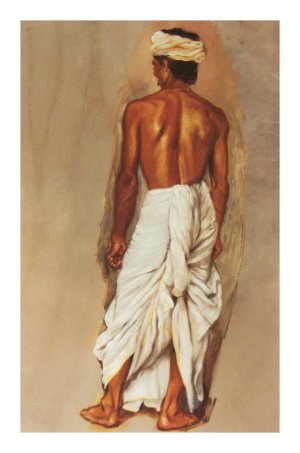|
Sari: Traditional Dress of India |
 Sari can tell us about woman's social and family status. We know that by observing the style, fabric quality, ornamentation, and floral motifs used.
Sari Sari can tell us about woman's social and family status. We know that by observing the style, fabric quality, ornamentation, and floral motifs used.
Sari
"SARI": TRADITIONAL DRESS OF INDIA
In this “Globalization World”, most governments open their countries with the reason of economy, politic and society. It seems that world is becoming sans frontier.
However, each country still tries to conserve their national heritage both cultural and social because these great treasures can tell them who they are, furthermore, they
can learn the thinking method of their ancients. The lessons that have been proved for long time, in real life.
“Traditional costume” is one of the heritage which can tell very well the history and lifestyle of people in the country. How does it show?
We are going to find answer together. For this time, we will go to South Asia country where most women still wear one of the oldest apparel called “Sari”.
India is our destination.
“Sari is a length of cloth measuring 13-26 feet long and approximately 4 feet wide which women wore by wrapping it around themselves
in different ways. Believe it or not? Chantal Boulanger, specialist of Indian drapes, found that there are more than 100 different styles of draping.
“The word “Sari” comes from “Sati” (Sanskrit word) means a strip of cloth before evolving into the Prakit “Sadi” and later anglicised into “Sari”
used until now. There are some references showing that the earlier form of this traditional dress is not long like this one in the present. It was a briefer
garment with a veil and no discernable bodice. Even today, in some rural areas it is quite common for a women to leave bosom bare.
Some historians believe that “Dhoti” is the origin of sari. “Dhoti” is the oldest Indian draped garment, one long piece of cloth generaly white which men
wrapped around their legs to make sort of pants. It is short so wearer did not have the part that covered the chest and shoulders. In 14th century,
both men and women worn dhoti and it is possible that dhoti's women started to become longer. Islamic people believed that dhoti and sari were pure
because they were unstitched fabrics; perhaps because in the past, needles of bone were used for stitching. Even to the present day, we can see in sacred
ceremonies that men dress up in dhotis while women wear in sari.
 |
| Dhoti |
“Moreover, in the past, sari can tell us about woman's social and family status. We know that by observing the style, fabric quality, ornamentation,
and floral motifs used. Certain colors and motifs were region and community specific. Wealthy women wore saris made of silk but most women wore cotton ones.
Working women often pulled their sari up between their legs to make a sort of plants. Younger women generally wore brightly colored saris, but widows and other
women in mouring wore only white ones.
“Although the sari is the prodominant of dress for Indian women, it is not the only one. There are also other Indian garments including the following:
| Choli: | The choli is a tight-fitting top with a bare midriff and an open back worn with a sari. It has a rounded neckline; some have ties at the back neck and across the shoulder blades. It originally served as a bust support. |
 |
| Chagra: | A pleat or gathered skirt reaching to mid-shin/ankle length. May contain 20-30 yards offabric. Worn with a choli or kameez. |
| Salwar: | Very long trousers with a band at the ankle. Fullness falls in folds and conceals shape of legs. Worn with Kameez, |
| Kameez: | A long tunic, slightly flared at the hip with slits at hthe silders, reaches the knees. |
| Orhna: | Long scarf worn over the kameez. May be used to cover the head or face. |
| Dhoti: | Worn by men in Northern India. A long unstitched white cloth which wraps them from waist down to legs. |
| Turban: | A common form of headdress for Indian men, especially Hindu men. | Sari in daily life |
“Next time, I will take you to the Samurai country. Not for learning the technology or drawing Doraemon but to find and appreciate their culture via their traditinal dress. See you soon.
Solange
| Source: | www.alovelyworld.com |
| www.greateasternstreet.com |
| www.sarimagic.com |
| www.inden-netzwork.de |
| www.indeimport.com |
| www.tamu.edu |
| www.anthonychristian.co.uk |
|